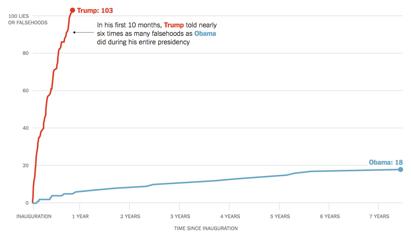The New York Times: Inside Trump’s Hour-by-Hour Battle for Self-Preservation. “With Twitter as his Excalibur, the president takes on his doubters, powered by long spells of cable news and a dozen Diet Cokes. But if Mr. Trump has yet to bend the presidency to his will, he is at least wrestling it to a draw.” By Maggie Haberman, Glenn Thrush and Peter Baker. Published December 9, 2017.
“As he ends his first year in office, Mr. Trump is redefining what it means to be president. He sees the highest office in the land much as he did the night of his stunning victory over Hillary Clinton — as a prize he must fight to protect every waking moment, and Twitter is his Excalibur. Despite all his bluster, he views himself less as a titan dominating the world stage than a maligned outsider engaged in a struggle to be taken seriously, according to interviews with 60 advisers, associates, friends and members of Congress.
For other presidents, every day is a test of how to lead a country, not just a faction, balancing competing interests. For Mr. Trump, every day is an hour-by-hour battle for self-preservation. He still relitigates last year’s election, convinced that the investigation by Robert S. Mueller III, the special counsel, into Russia’s interference is a plot to delegitimize him.”

